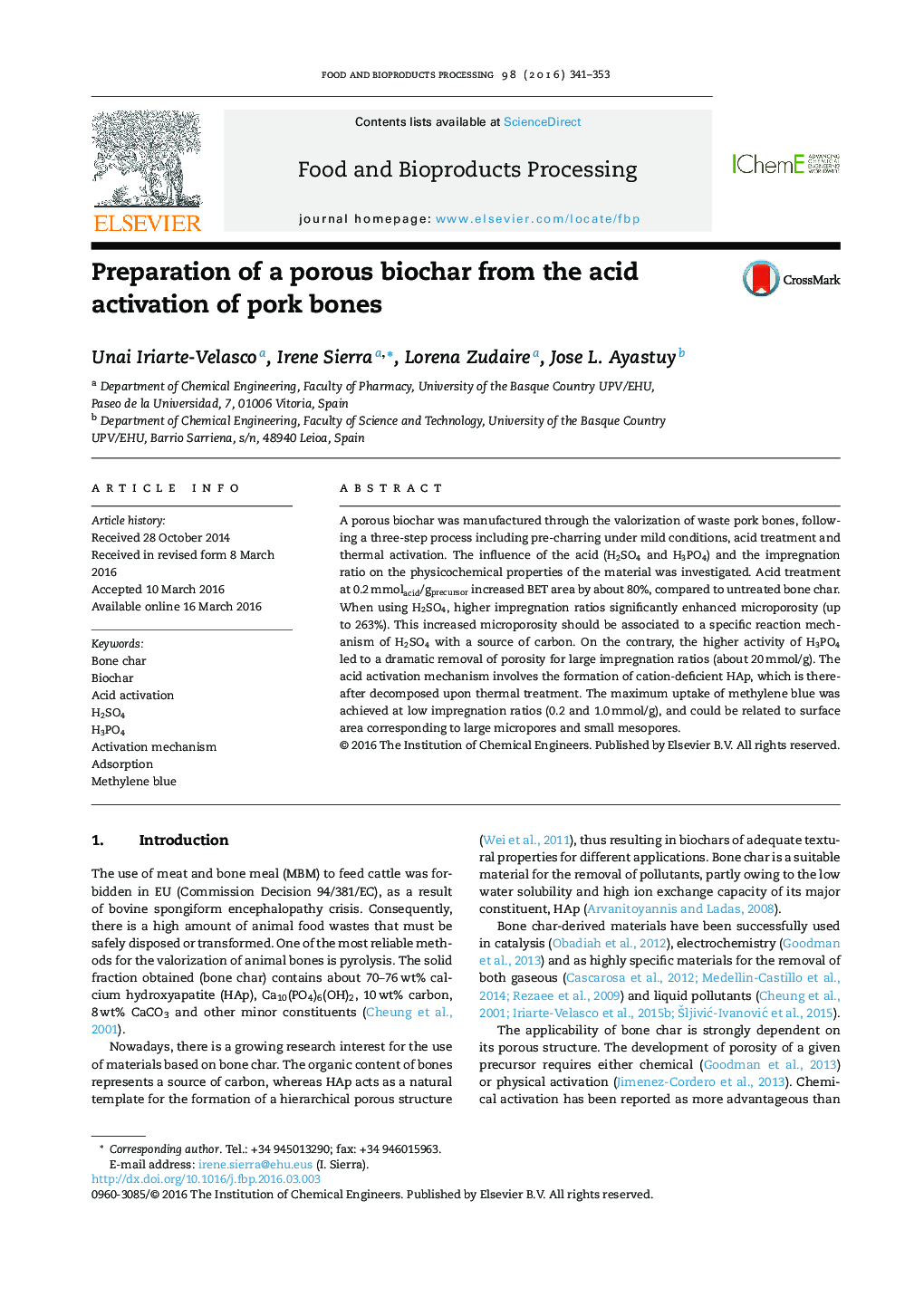| کد مقاله | کد نشریه | سال انتشار | مقاله انگلیسی | نسخه تمام متن |
|---|---|---|---|---|
| 18887 | 43036 | 2016 | 13 صفحه PDF | دانلود رایگان |
• A porous biochar was prepared through the valorization of pork bones.
• Treatment with H3PO4 or H2SO4 at 0.2 mmol/g increased BET surface area by 83%.
• For H2SO4, higher impregnation ratios enhanced microporosity up to 263%.
• At an impregnation ratio of 20 mmol/g H3PO4 hold a destructive effect.
• Release of CO2 during the pyrolysis is related to the development of microporosity.
A porous biochar was manufactured through the valorization of waste pork bones, following a three-step process including pre-charring under mild conditions, acid treatment and thermal activation. The influence of the acid (H2SO4 and H3PO4) and the impregnation ratio on the physicochemical properties of the material was investigated. Acid treatment at 0.2 mmolacid/gprecursor increased BET area by about 80%, compared to untreated bone char. When using H2SO4, higher impregnation ratios significantly enhanced microporosity (up to 263%). This increased microporosity should be associated to a specific reaction mechanism of H2SO4 with a source of carbon. On the contrary, the higher activity of H3PO4 led to a dramatic removal of porosity for large impregnation ratios (about 20 mmol/g). The acid activation mechanism involves the formation of cation-deficient HAp, which is thereafter decomposed upon thermal treatment. The maximum uptake of methylene blue was achieved at low impregnation ratios (0.2 and 1.0 mmol/g), and could be related to surface area corresponding to large micropores and small mesopores.
Figure optionsDownload high-quality image (74 K)Download as PowerPoint slide
Journal: Food and Bioproducts Processing - Volume 98, April 2016, Pages 341–353
